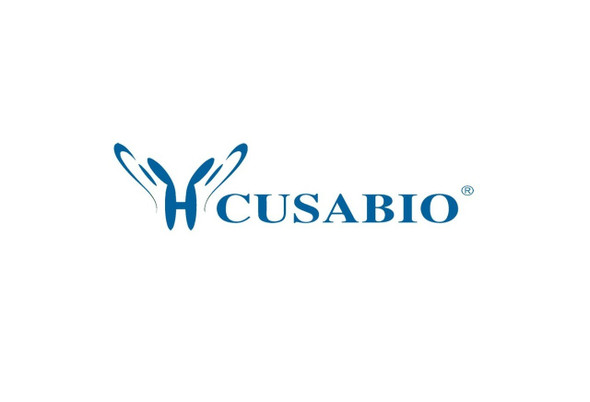Cusabio Human Recombinants
Recombinant Human Protein-methionine sulfoxide oxidase MICAL2 (MICAL2), partial | CSB-YP013808HU
- SKU:
- CSB-YP013808HU
- Availability:
- 3 - 7 Working Days
Description
Recombinant Human Protein-methionine sulfoxide oxidase MICAL2 (MICAL2), partial | CSB-YP013808HU | Cusabio
Alternative Name(s): Molecule interacting with CasL protein 2 ;MICAL-2
Gene Names: MICAL2
Research Areas: Cell Biology
Organism: Homo sapiens (Human)
AA Sequence: MGENEDEKQAQAGQVFENFVQASTCKGTLQAFNILTRHLDLDPLDHRNFYSKLKSKVTTWKAKALWYKLDKRGSHKEYKRGKSCTNTKCLIVGGGPCGLRTAIELAYLGAKVVVVEKRDSFSRNNVLHLWPFTIHDLRGLGAKKFYGKFCAGSIDHISIRQLQLILFKVALMLGVEIHVNVEFVKVLEPPEDQENQKIGWRAEFLPTDHSLSEFEFDVIIGADGRRNTLEGFRRKEFRGKLAIAITANFINRNSTAEAKVEEISGVAFIFNQKFFQDLKEETGIDLENIVYYKDCTHYFVMTAKKQSLLDKGVIINDYIDTEMLLCAENVNQDNLLSYAREAADFATNYQLPSLDFAMNHYGQPDVAMFDFTCMYASENAALVRERQAHQLLVALVGDSLLEPFWPMGTGCARGFLAAFDTAWMVKSWNQGTPPLELLAERESLYRLLPQTTPENINKNFEQYTLDPGTRYPNLNSHCVRPHQVKHLYITKELEH
Source: Yeast
Tag Info: N-terminal 6xHis-tagged
Expression Region: 1-495aa
Sequence Info: Partial
MW: 58.5 kDa
Purity: Greater than 90% as determined by SDS-PAGE.
Relevance: Nuclear monooxygenase that promotes depolymerization of F-actin by mediating oxidation of specific methionine residues on actin and regulates the SRF signaling. Acts by modifying nuclear actin subunits through the addition of oxygen to form methionine-sulfoxide, leading to promote actin filament severing and prevent repolymerization. Acts as a key regulator of the SRF signaling pathway elicited by nerve growth factor and serum: mediates oxidation and subsequent depolymerization of nuclear actin, leading to increase MKL1/MRTF-A presence in the nucleus and promote SRF:MKL1/MRTF-A-dependent gene transcription. Does not activate SRF:MKL1/MRTF-A through RhoA.
Reference: Complete sequencing and characterization of 21,243 full-length human cDNAs.Ota T., Suzuki Y., Nishikawa T., Otsuki T., Sugiyama T., Irie R., Wakamatsu A., Hayashi K., Sato H., Nagai K., Kimura K., Makita H., Sekine M., Obayashi M., Nishi T., Shibahara T., Tanaka T., Ishii S. , Yamamoto J., Saito K., Kawai Y., Isono Y., Nakamura Y., Nagahari K., Murakami K., Yasuda T., Iwayanagi T., Wagatsuma M., Shiratori A., Sudo H., Hosoiri T., Kaku Y., Kodaira H., Kondo H., Sugawara M., Takahashi M., Kanda K., Yokoi T., Furuya T., Kikkawa E., Omura Y., Abe K., Kamihara K., Katsuta N., Sato K., Tanikawa M., Yamazaki M., Ninomiya K., Ishibashi T., Yamashita H., Murakawa K., Fujimori K., Tanai H., Kimata M., Watanabe M., Hiraoka S., Chiba Y., Ishida S., Ono Y., Takiguchi S., Watanabe S., Yosida M., Hotuta T., Kusano J., Kanehori K., Takahashi-Fujii A., Hara H., Tanase T.-O., Nomura Y., Togiya S., Komai F., Hara R., Takeuchi K., Arita M., Imose N., Musashino K., Yuuki H., Oshima A., Sasaki N., Aotsuka S., Yoshikawa Y., Matsunawa H., Ichihara T., Shiohata N., Sano S., Moriya S., Momiyama H., Satoh N., Takami S., Terashima Y., Suzuki O., Nakagawa S., Senoh A., Mizoguchi H., Goto Y., Shimizu F., Wakebe H., Hishigaki H., Watanabe T., Sugiyama A., Takemoto M., Kawakami B., Yamazaki M., Watanabe K., Kumagai A., Itakura S., Fukuzumi Y., Fujimori Y., Komiyama M., Tashiro H., Tanigami A., Fujiwara T., Ono T., Yamada K., Fujii Y., Ozaki K., Hirao M., Ohmori Y., Kawabata A., Hikiji T., Kobatake N., Inagaki H., Ikema Y., Okamoto S., Okitani R., Kawakami T., Noguchi S., Itoh T., Shigeta K., Senba T., Matsumura K., Nakajima Y., Mizuno T., Morinaga M., Sasaki M., Togashi T., Oyama M., Hata H., Watanabe M., Komatsu T., Mizushima-Sugano J., Satoh T., Shirai Y., Takahashi Y., Nakagawa K., Okumura K., Nagase T., Nomura N., Kikuchi H., Masuho Y., Yamashita R., Nakai K., Yada T., Nakamura Y., Ohara O., Isogai T., Sugano S.Nat. Genet. 36:40-45(2004)
Storage: The shelf life is related to many factors, storage state, buffer ingredients, storage temperature and the stability of the protein itself. Generally, the shelf life of liquid form is 6 months at -20?/-80?. The shelf life of lyophilized form is 12 months at -20?/-80?.
Notes: Repeated freezing and thawing is not recommended. Store working aliquots at 4? for up to one week.
Function: Nuclear monooxygenase that promotes depolymerization of F-actin by mediating oxidation of specific methionine residues on actin to form methionine-sulfoxide, resulting in actin filament disassembly and preventing repolymerization. In the absence of actin, it also functions as a NADPH oxidase producing H(2)O(2) (By similarity). Acts as a key regulator of the SRF signaling pathway elicited by nerve growth factor and serum
Involvement in disease:
Subcellular Location: Nucleus
Protein Families: Mical family
Tissue Specificity:
Paythway:
Form: Liquid or Lyophilized powder
Buffer: If the delivery form is liquid, the default storage buffer is Tris/PBS-based buffer, 5%-50% glycerol. If the delivery form is lyophilized powder, the buffer before lyophilization is Tris/PBS-based buffer, 6% Trehalose, pH 8.0.
Reconstitution: We recommend that this vial be briefly centrifuged prior to opening to bring the contents to the bottom. Please reconstitute protein in deionized sterile water to a concentration of 0.1-1.0 mg/mL.We recommend to add 5-50% of glycerol (final concentration) and aliquot for long-term storage at -20?/-80?. Our default final concentration of glycerol is 50%. Customers could use it as reference.
Uniprot ID: O94851
HGNC Database Link: HGNC
UniGene Database Link: UniGene
KEGG Database Link: KEGG
STRING Database Link: STRING
OMIM Database Link: OMIM









